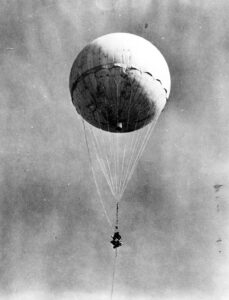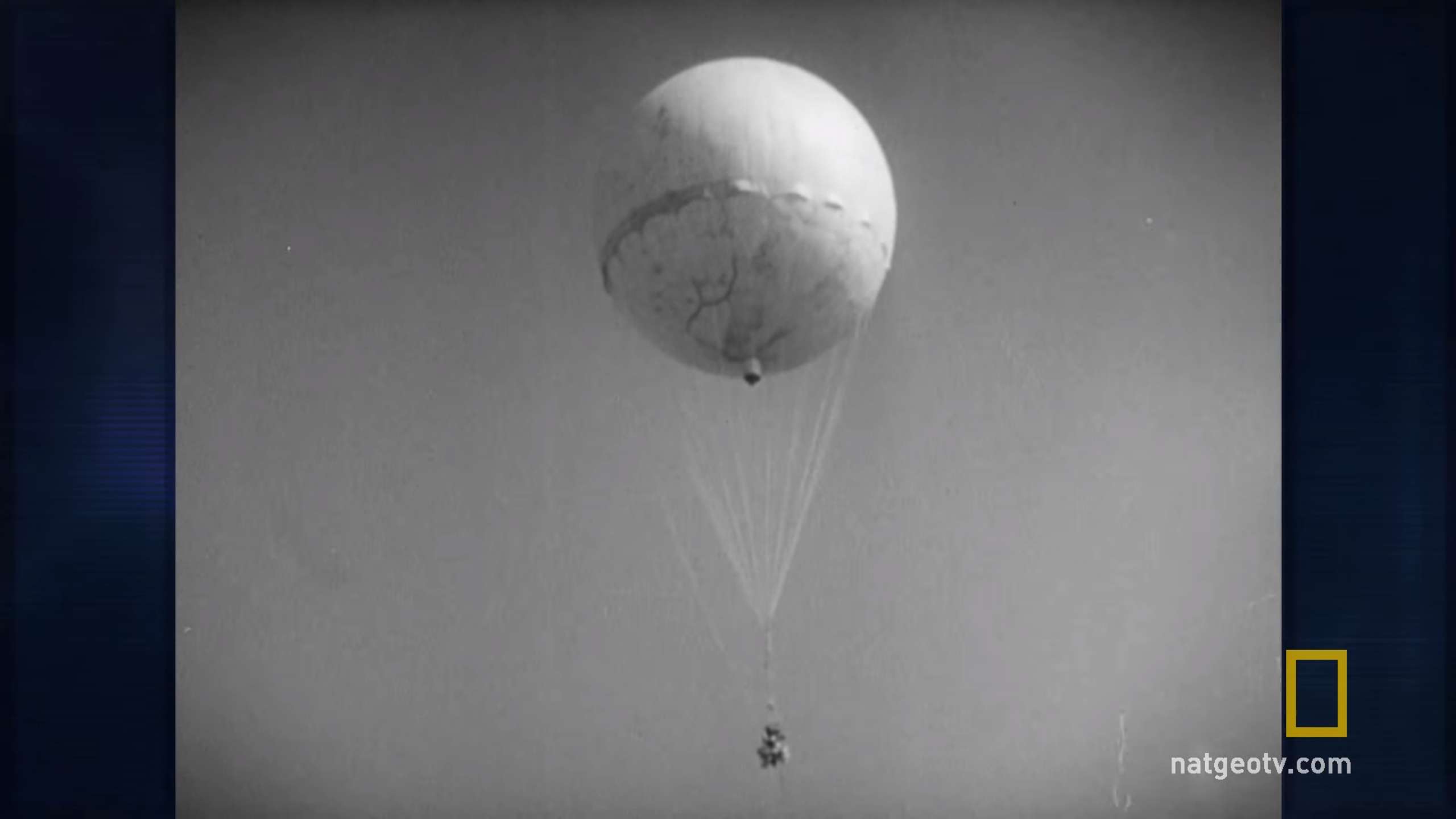In the last year, news reports of mystery balloons, reportedly from China, invading North American air space attracted world-wide attention. But ...
By Reg Sherren
The last one was found less than ten years ago deep in the British Columbia bush, barely 500 kilometers from the Sunshine Coast. Partially buried in the earth after floating in from another continent over 70 years ago, it was still considered so deadly that demolition crews blew it up rather than try to move it.
It was 1943, and they were bombs delivered by balloons, not from China, but from Japan.
In the last year, news reports of mystery balloons, reportedly from China, invading North American air space attracted world-wide attention. But back in 1944 thousands of them were released by the Japanese military, sent with deadly intentions all along the Pacific coast. And the fact that the news media maintained a complete information blackout about their presence, probably saved hundreds, if not thousands of lives.
About 800 kilometers south of Sechelt, near Eugene, Oregon, you’ll find the Mitchell monument. There, in a quiet forest meadow, a solitary tree – a ponderosa pine – still shows the scorched markings of the balloon bomb attack that took place on that spot. It was the first ever successful inter-continental bombing in the world’s history, and it killed the only civilians to die from an attack on the North American mainland during World War II.

The plan started developing back in 1942. After the American Air Force initiated bombing raids across the Japanese mainland, Imperial military leaders started planning retaliatory attacks of their own. Resources were limited but they decided to re-activate experiments started some years before, using giant balloons to deliver bombs.
Code named Operation Fu-Go it took two years for Japanese scientists to develop massive balloons, over 10 meters in diameter, filled with hydrogen, and capable of crossing the Pacific Ocean. High up in the jet stream, powerful winter trade winds, what is now known as the jet stream, could push them at speeds approaching 300 kilometers an hour. At those speeds, floating close to 10 thousand meters above the water, a balloon could reach the North American Pacific coast in as little as three or four days. A sophisticated mechanical ballast system kept them afloat long enough to cross but eventually, as the hydrogen leaked out, they would drop from the sky.
Attached to these potentially lethal spheres were four incendiary or firebombs as well as a high explosive anti-personnel mine surrounded by shrapnel rings. Beyond its deadly capabilities, what Japanese military authorities really hoped for was to start huge forest fires all along the Pacific coast, creating havoc, interrupting supply chains, and chewing up valuable resources.
Thousands of Japanese high school girls were conscripted to assemble the balloons. Constructed from layers of glued paper, the thinking was that the balloons themselves, upon impact and explosion, would help incinerate the forest or wherever they landed. In all, over 9,000 of these unique bomb delivery systems were built, and at five in the morning on November 3, 1944, the first were launched from the Japanese island of Honshu.
It didn’t take long for the balloons to start showing up, first off the coast of Hawaii, then down the pacific coast, from Alaska, all along British Columbia, and as far south as California. Homeland forces, police and forest rangers in Canada were all put on high alert. At the same time media outlets were censored, ordered not to report any incidents where balloons had exploded or been recovered. The concern was the attention would also ignite wide-spread panic among the civilian population.
The Japanese, however, had made one critical miscalculation. While deploying the balloons in winter did guarantee stronger trade winds, it also brought the rainy season to the Pacific coast, and the winter of 1944-45 was one of the rainiest on record. Some areas received anywhere from four to six inches more rain than normal. And while over nine thousand balloons were launched, fewer than a thousand made it to the North American coast. They did ignite some small fires but there was little damage.
There were, however, two exceptions. One of them proved deadly.
On May 5, 1945, it was a beautiful spring morning and Reverend Archie Mitchell and his young wife from Bly, Oregon decided to head to Fremont National Forest for a picnic. With them were five young people from their Sunday school. 26-year-old Elsye Mitchell would soon have a little one of her own, as she was pregnant with the couple’s first child.
Rev. Mitchell dropped his wife and the kids off near a picnic area and went looking for a place to park. As he was returning he heard one of them shout that they had discovered an unusual object. As he told the local newspaper back then, “I hurriedly called out a warning to them, but it was too late. Just then there was a big explosion. I ran up-and they were all lying there dead.” His wife Elsie and their unborn child, the five teenagers, all gone in an instant.
There was one other major incident, this one a tactical success, near Toppenish, Washington. In March 1945, a balloon landed and exploded, knocking out power lines that provided electricity to a top secret nuclear program. Ironically it took out the power lines to the Manhattan Project’s Production facility. It took three days to get the facility’s nuclear reactors back to full capacity. The plutonium produced by those reactors was eventually used in Fat Man, the atomic bomb dropped later that year over Nagasaki, Japan.
It turns out the censorship of the news media had an effect more profound than any authority could have imagined. The Japanese had been monitoring Canadian and American radio news broadcasts. With no media reports of damage from Japanese balloon bombs, and running short of supplies like paper and hydrogen, in April 1945 the Japanese military decided to abandon the balloon program, concluding it was too ineffective to continue. Had they continued into the drier summer months, they may have had much deadlier success.
Those Japanese balloon bombs drifted as far east as Saskatchewan and Manitoba, and just nine years ago, in 2014, another was discovered by forest workers near Lumby British Columbia. It was half buried in the forest floor, but the people who found it knew enough to leave it alone and contact the RCMP. A military bomb disposal unit was called in, and rather than take any chances, they decided to blow it up. Parts of another were recovered on Denman Island, and the Comox Air Force Museum on Vancouver Island now has a restored balloon bomb on display, a permanent loan from the Canadian War Museum in Ottawa. Authorities warn they can only assume there could be more out there in the British Columbia wilderness.
There were never any reports of Canadians being killed or injured by these ingenious devices. As for the Americans, the widowed Reverend Archie Mitchell remarried after his wife was killed and was later kidnapped while working as a missionary in Vietnam. His fate remains unknown. In the 1980s some of the former Japanese school girls who helped construct the balloons came to the forest in Oregon and folded 1,000 paper cranes…their offering of regret for the loss of the six American civilians, killed by a war balloon that drifted in from far away.
(Editor's Note: Check this link for reference. https://www.youtube.com/watch?v=0m9EqDlBBeg)


